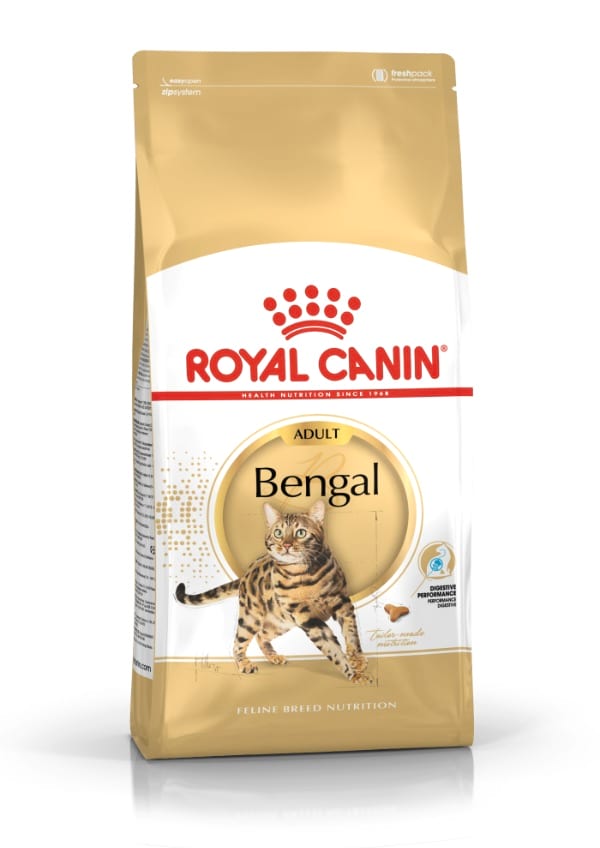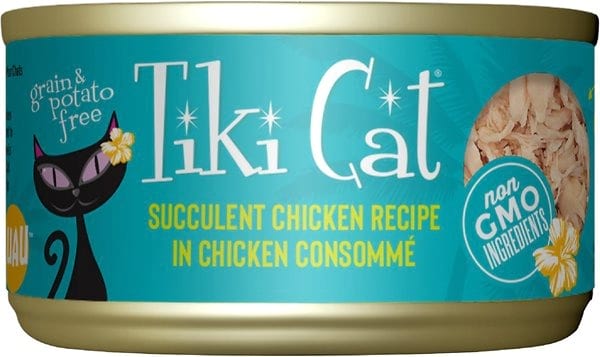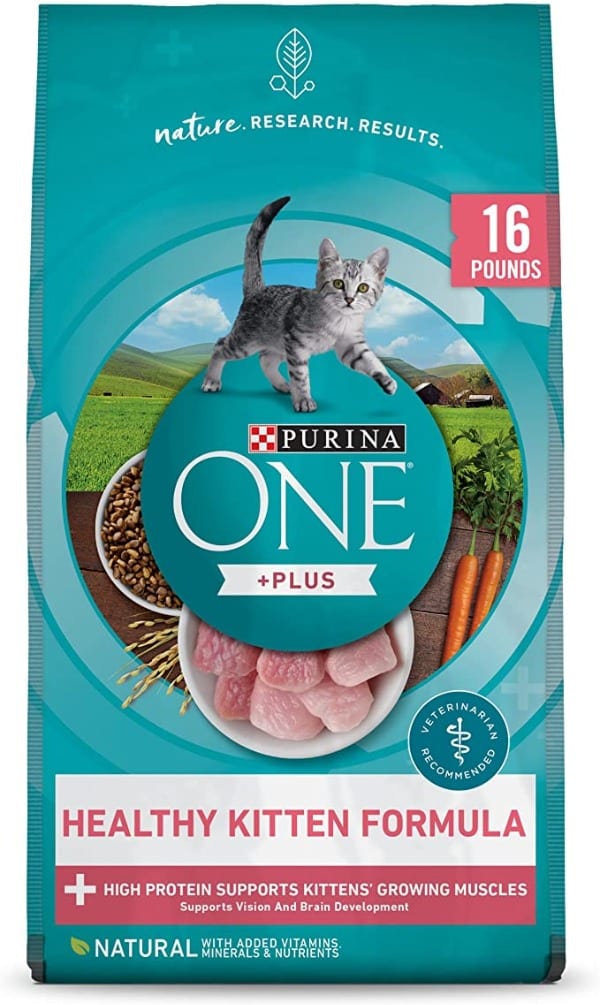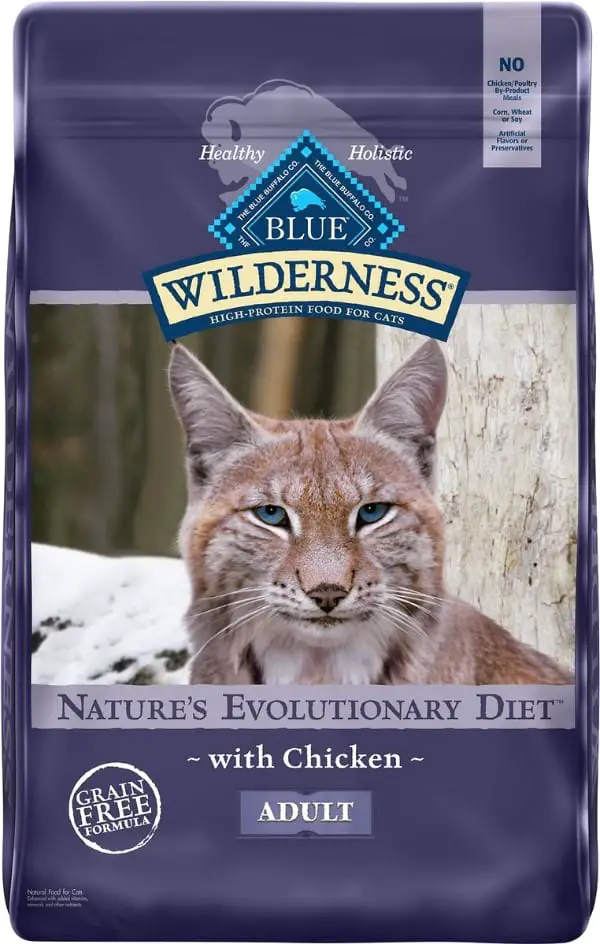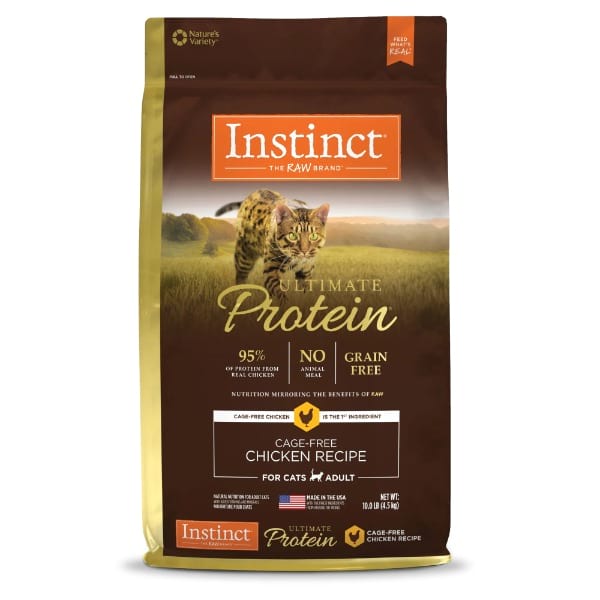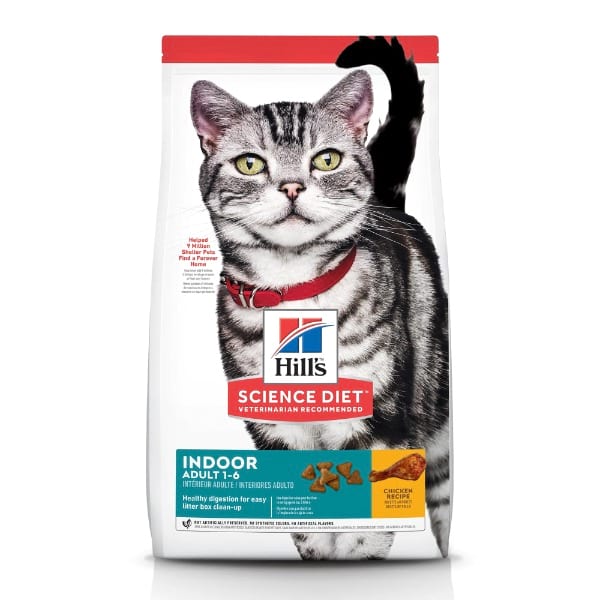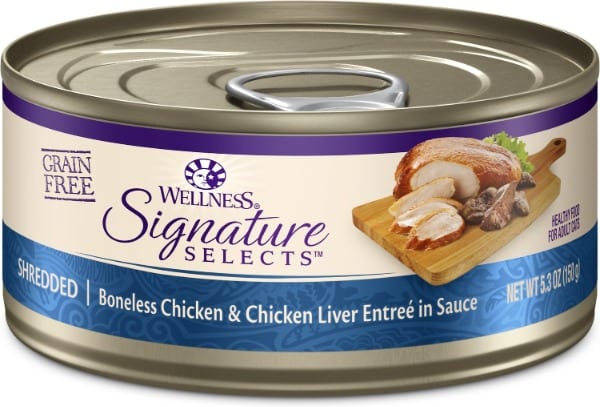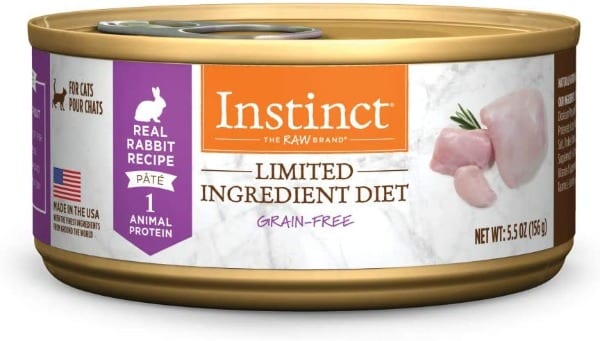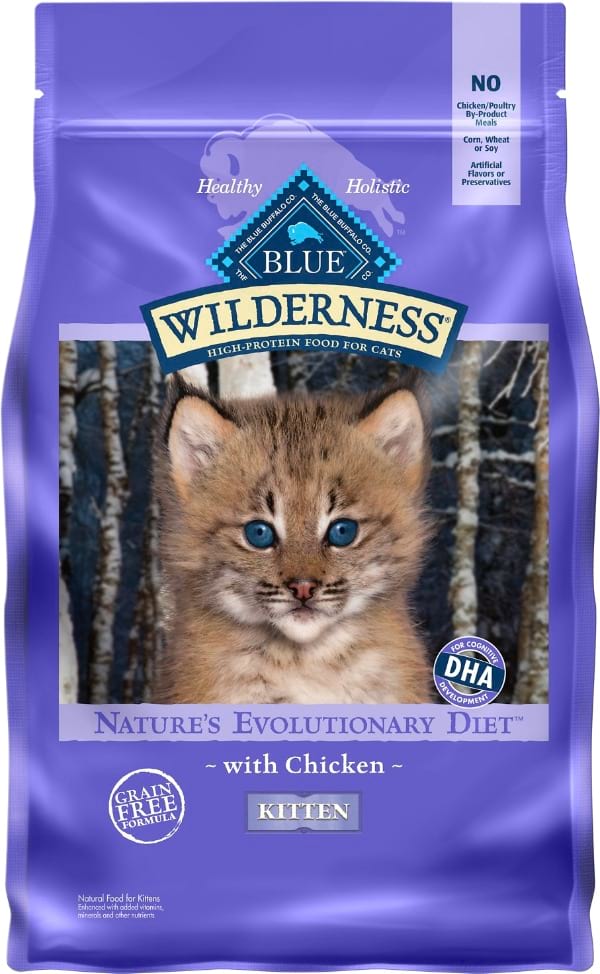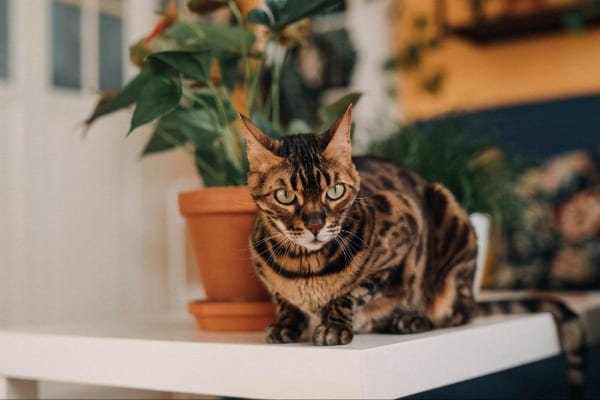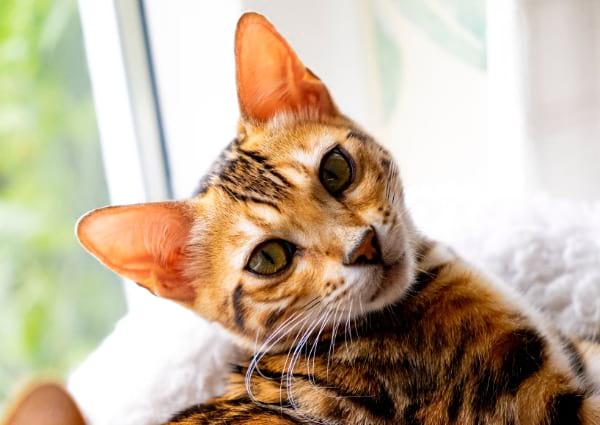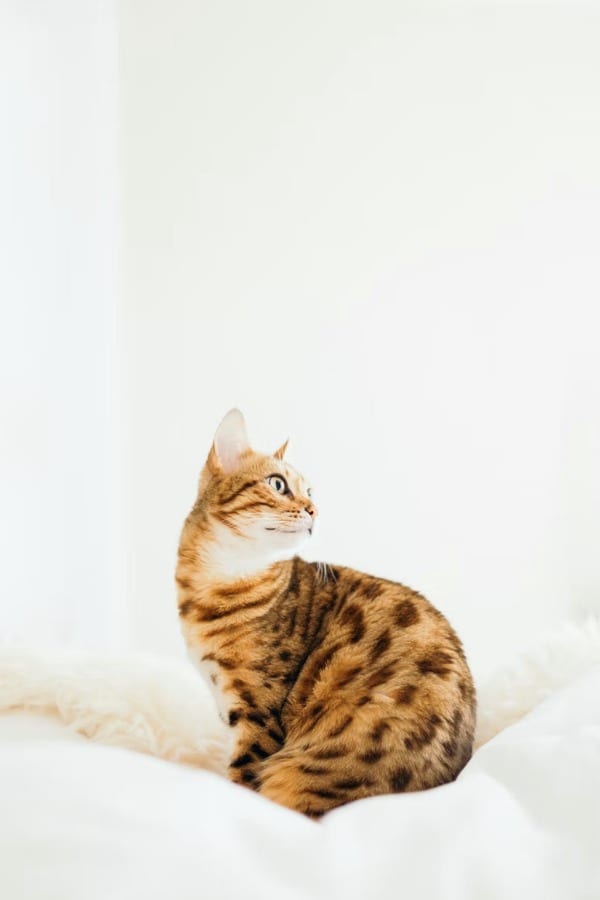There are many different types of food for cats, they differ in nutritional content, type, and cat breed they have been formulated for. The Bengal cat originated in the 1960s when a genetic mutation was discovered in a litter of domesticated cats.
According to the International Cat Association, originally developed from crosses between the domestic cats and the Asian Leopard Cat, the Bengal is the only domestic cat that can have rosettes like the markings on Leopards, Jaguars and Ocelots. The Bengal cat is a good pet for people who enjoy a pet that has the look of a wild cat, but who do not want the problems of wild cats. Most Bengal cats are either domestic short-haired or domestic long-haired cats, which means that they can be a little more rambunctious than their non-spotted relatives.
Bengal cat owners are always curious to know what the best food for Bengal cats is. The answer to this question is relatively simple. It depends on what you’re looking for. You want to make sure that your cat is well-fed and healthy, but you also want to make sure that your furry friend is happy. The best food for Bengal cats is going to be different for each cat. In this guide, we will share with you our top picks for Bengal felines, point out their pros and cons, as well as provide comprehensive information about the type of food for these cats and the feeding regimen.
The 10 Best Cat Foods for Bengals
Here is the list of top choices of cat food for Bengals. These foods will keep little tigers healthy and happy.
Editor’s Note
Can Bengals eat regular cat food?
Due to Bengal cat dietary needs, veterinarians advise that dry meals include 9% fat and a minimum of 26% protein.
Royal Canin Bengal Adult Dry Cat Food
Find on: Chewy
This delicious cat food was formulated with the needs of Bengals in mind. Therefore, it has a balanced ratio of protein and fat to maintain the lean muscles of your kitty. Besides, this food is packed with omega fatty acids to preserve the luxurious shine of your kitty’s coat. On top of that, this formula features prebiotics and highly-digestible protein for felines with food sensitivities.
Pros
- Kibbles have a special Y-shape, which encourages Bengals to chew and crunch food.
- This Royal Canin Bengal cat food can be mixed with Royal Canin wet food.
- It features breed-specific nutrients.
- Has enough protein for strong muscles.
- Supports healthy digestion.
- Great for picky cats.
- Promotes good oral hygiene.
Cons
- It doesn’t come in small bags, so food can become less fresh over time.
- This best dry food for Bengal cats is pricey.
Weruva Paw Lickin’ Chicken in Gravy Grain-Free Canned Cat Food
Find on: Chewy
This best cat food for Bengal kitten has everything your little carnivore strives for: it features real chicken as the first ingredient and has a blend of essential vitamins and minerals. With these high-quality ingredients, your cat will be strong, healthy, and happy.
Pros
- Weruva grain-free food features real chicken as the first ingredient.
- This broth-based gravy is perfect for finicky eaters.
- This best Bengal cat food is absolutely safe for your cat as it is 100% grain-free, and has zero BPA, antibiotics, hormones, GMOs, or MSG.
- Has high moisture content.
- This chicken meal contains taurine for healthy vision and heart.
- This Weruva kitten food is packed with essential amino acids, vitamins, minerals, and omegas.
- Great for cats with food allergies.
Cons
- Costly.
- Some pet parents complain that this food is too stringy.
Tiki Cat Puka Puka Luau Succulent Chicken in Chicken Consomme Grain-Free Canned Cat Food
Find on: Chewy
If you’ve been looking for cat food with high-quality ingredients for your little carnivore, then this antibiotic and hormone-free food is just what you need. Shredded chicken in chicken broth not only keeps your fur baby hydrated but also features protein for strong bones and muscles, sunflower oil (rich in omegas) for healthy skin and coat, essential vitamins, minerals, amino acids, and taurine for the overall health.
Pros
- It doesn’t contain gluten, grains, starches, a chicken by product meal, and flours.
- This balanced Bengal cat diet smells wholesome.
- Chicken breast is the first ingredient.
- The price is reasonable.
- Tiki Cat supports digestive and urinary health.
Cons
- The texture is very chickeny (the slices are very big).
- It doesn’t great for finicky eaters.
Purina ONE Healthy Kitten Formula Kitten Food
Find on: Amazon
Your Bengal kittens will go nuts from this high-quality food. It features real chicken as the first ingredient that helps maintain strong muscles. There are zero fillers, so your kitty will grow into a healthy adult kitten. The taste of this healthy kitten formula is delectable because it is made with DHA, this nutrient is found in mother’s milk. Therefore, it promotes healthy vision and brain development.
Pros
- This good cat food for kittens has a high amount of protein.
- Crunchy kibbles have an enticing texture.
- Affordable.
- This best food for Bengal kittens keeps kitties energized.
- Kibbles are small enough for kitties’ mouths.
- Omegas make a cat’s coat shiny and velvety.
Cons
- This Bengal kitten food contains soy.
- It may cause diarrhea and vomiting.
Blue Buffalo Wilderness Chicken Recipe Grain-Free Dry Cat Food
Find on: Chewy
Blue Wilderness with chicken will make your cat purr for the taste. This protein-rich and omega-rich diet will help your furry friend maintain healthy muscles, coats, and skin. What makes this particular food exceptional is LifeSource Bits. This is a special blend of essential vitamins, minerals, and antioxidants that improve the feline’s immune system and maintain a healthy oxidative balance.
Pros
- Omegas make a cat’s coat thick and shiny.
- It makes the pet bed great.
- It doesn’t contain soy, wheat, preservatives, and artificial flavors.
- This formula is grain-free.
- A blend of vitamins, antioxidants, and minerals supports your feline buddy’s overall health.
Cons
- Expensive.
- Picky eaters may refuse to eat this food.
- It is a bit grainy.
- It isn’t suitable for cats with sensitive stomachs.
Instinct Ultimate Protein Grain-Free Cage-Free Chicken Recipe Freeze-Dried Raw Coated Dry Cat Food
Find on: Chewy
This nutritional meal is made using only premium ingredients to ensure your little fur baby feels and looks its best. With every bite, your kitty gets protein from real chicken, natural omegas, probiotics, and antioxidants to support the feline’s digestive health and immune system. Besides, it’s impossible not to mention the delicate taste and smell of every piece.
Pros
- This Bengal cat food is vet-recommended.
- Makes the cat’s coat soft and shiny.
- Great for diabetic cats.
- It doesn’t contain pea products.
- Ensure optimal nutrient absorption.
Cons
- Tapioca is the second ingredient. Many buyers complain that this new formula isn’t suitable for kitties with urinary problems and sensitive stomachs.
- Expensive.
Hill’s Science Diet Adult Indoor Chicken Recipe Dry Cat Food
Find on: Chewy
Some indoor cats are deficient in some vitamins, minerals, and the lack of fiber. Therefore, this cat food by Hill’s takes care of any problems your feline buddy may encounter. Wholesome ingredients provide a balanced meal for gentle digestion. Packed with the necessary vitamins and antioxidants, this healthy dry food supports the healthy immune system and cardiovascular system of adult Bengal cats.
Pros
- All the ingredients meet the highest quality industry standards.
- Healthy fiber maintains healthy digestive health and reduces the occurrence of hairballs.
- Doesn’t contain artificial flavors, colors, and preservatives.
- The flavor is great.
- Makes a litter box easy to clean.
Cons
- Contains hard morsels that are hard to chew.
- The kibble size is large.
Wellness CORE Signature Selects Shredded Boneless Chicken & Chicken Liver Entree in Sauce Grain-Free Canned Cat Food
Find on: Chewy
This Wellness grain-free formula features lean, shredded chicken as the first ingredient for maintaining the healthy muscles of your kitty and keeping it energized. Your pal will love this tasty gravy as it is tasty and full of vitamins, minerals, antioxidants, and omegas from sunflower or flaxseed oil. Therefore, your four-legged companion has a healthy coat, strong immunity, and strong muscles.
Pros
- The flavor is great.
- This reliable cat food is grain-free.
- Shredded kitten is the first ingredient.
- Contains enough moisture to keep your kitty hydrated.
- Suitable for cats with kidney issues.
Cons
- This food is made in Thailand.
- It isn’t suitable for finicky cats with sensitive stomachs.
- Some pet parents complain that the shreds are too long and big.
- The kcal per can is low, so one can can’t be enough for healthy adult cats.
Instinct Limited Ingredient Wet Cat Food, Limited Ingredient Diet Natural Grain Free Canned Cat Food
Find on: Amazon
This cat food features easily digestible protein to encourage your kitty’s healthy digestion and promote strong muscles. Besides, this protein will fuel your cat’s adventures. It doesn’t contain ingredients that can trigger food sensitivity. This balanced nutrition is packed with omegas 3 and 6 that support your kitty’s immune system and coat health.
Pros
- Suitable for cats with allergies and digestive issues.
- Crafted in the USA.
- This canned food doesn’t contain wheat, soy, corn, preservatives, and artificial colors.
- The pate texture is great, and the flavor is delicious.
- This gravy removes toxins efficiently.
Cons
- There are bone fragments, some of them are sharp.
- According to cat food reviews, the consistency of this wet food for Bengal cats is watery.
- Peas are hard and difficult to eat.
- This best wet food for Bengal cats is pricey.
Blue Buffalo Wilderness Kitten Chicken Recipe Grain-Free Dry Cat Food
Find on: Chewy
This food with a natural chicken flavor satisfies your kitten’s natural craving for meat and promotes the healthy development of bones and muscles. Besides, this taurine-rich diet makes sure your Bengal kitten has healthy vision and cardiovascular system. Another aspect that makes this reliable Bengal cat food exceptional is a special blend of vitamins, minerals, and antioxidants that encourage the strong immune system of your tiny-but-mighty feline.
Pros
- Contains the fatty acids DHA and ARA that promote healthy growth.
- This best cat food for Bengals is grain-free and doesn’t include soy, corn, wheat, and by-products.
- LifeSource Bits support a healthy immune system.
- Taurine supports eyes and cognitive health.
- Fatty acids like the ones found in mama’s milk promote healthy growth.
- Great for kitties with gastrointestinal issues.
Cons
- It may cause vomiting.
- Kibbles are too small.
- Finicky cats may refuse to eat this food.
Nutritional Needs of Bengal Cats
Bengal cats have interesting dietary needs. They have a high metabolism and can eat a lot, but they need more protein than an average domestic cat. Try to give them around 20% of their diet in meat content. This can be difficult to get since they don’t eat meat by themselves, but you can incorporate a chicken meal into the diet. Make sure to get cat food that is high quality, it should have a label from FEDIAF or AAFCO. Also, focus on various key parameters:
- Healthy fats
Bengal cats are known for their beautiful, shiny coats. To keep their skin and coat healthy, make sure their food contains enough healthy fats as well as omega-3 and omega-6 fatty acids. Foods should contain chicken fat, fish oil, and salmon oil.
- Fiber
For good gastrointestinal function, it is important to provide the right amount of fiber in the diet. Choose foods that contain fruits and vegetables.
How Dry vs. Wet Bengal Cat Food Differs
Every cat owner should know the main differences between wet and dry foods. Both dry and wet food for Bengal cats contains essential nutrients, vitamins, and minerals. The difference lies in the storage method as well as the price range. Wet food has a shorter shelf life, is packaged in smaller containers, and usually costs more. Dry food is more economical, has a longer shelf life, and can be mixed with canned food or water to prevent dehydration.
A Note on Raw Diet for Bengal Cats
A natural diet with a competent approach to its preparation is the key to the excellent well-being of Bengal kittens. A homemade raw food diet contains healthy foods that support the overall health of cats and help maintain a healthy weight.
Pros
- Varied menu.
- Product availability.
- Lower food costs compared to the most commercial cat foods provided by reliable pet food companies.
- Quality control of products (you make sure your fur baby always gets fresh cat food).
Bengal kittens can be transferred to a natural diet at the age of 2-2.5 months. What to feed Bengal cats? Some products that can be included in the natural Bengal cat raw diet are the following:
- Lean meat (beef, veal, rabbit meat, deboned chicken, turkey meal)
Meat products contain protein, essential amino acids, minerals, vitamins, and other substances for the growth and development of kittens. Bengals are given raw, baked, stewed, boiled meat, cut into small portions, or minced meat. Raw meat products must be scalded with boiling water before serving and washed under running water.
- Low-fat fish (pollock, hake, tuna)
Bengals are given fish no more than 1-2 times in 7-10 days. After 9-12 months, you can supplement the Bengal’s diet with fish of more fatty varieties (salmon, mackerel, herring). Before serving, the fish carcass is cleaned of bones. Raw fish is prohibited because it can be infected with helminths and other parasites.
- Eggs
A chicken egg is given to a kitten once a week in a boiled form. It is best to give only the yolk since the protein is poorly absorbed by the pet’s body. Quail eggs (boiled and raw eggs) are given twice a week.
- Vegetable oil
Vegetable oil is the source of vitamin E and saturated fatty acids. Linseed, olive, and sunflower oil are added to cereals or vegetables for their better absorption.
- Dairy products
Give kittens every other day calcined cottage cheese, natural yogurt, kefir, fermented baked milk, low-fat sour cream, and whey.
- Vegetables, fruits, and herbs
These ingredients must be present in the diet of a Bengal kitten. They replenish the deficiency of vitamins and minerals and contain fiber that normalizes and improves digestion. Give the Bengal kitten zucchini, carrots, lettuce, dill, and pumpkin. Cabbage can be fed if it does not provoke flatulence. Do not give Bengals sweet, juicy fruits (grapes), and soybeans.
What To Avoid Feeding Your Bengal Cat
Here are some things you should never feed Bengal cats: raw fish and meat, chocolate, dog food, animal bones, avocados, onion or garlic, beans or peas, spinach, or rhubarb. There are plenty of other options for you to choose from when it comes to your feline friend’s diet. Have a look at the infographic below for more information about the different types of food you can feed your Bengal cat.
Bengal Cat Food Allergies
Determining a Bengal house cat’s food allergies ahead of time is incredibly important, especially considering estimates that nearly 10% of all cats have food allergies. Bengal cat food allergies are a growing problem, but they can be treated.
Symptoms of Bengal cat food allergies include:
- Itchy skin
- Sores
- Vomiting
- Diarrhea
- General lethargy
- Coughing
- Sneezing
- Skin discoloration
- Mouth ulcers
- High anxiety
- Loss of appetite
- Excessive scratching
If your pet is showing any of these symptoms, consult a vet.
Common Bengal Cat Health Issues
Bengal cats are affectionate, intelligent, and playful cats that make wonderful household pets. Unfortunately, they do suffer from some health issues.
- One of the most common issues is their Bengal skin and fur. These cats are prone to skin issues that can cause painful rashes and inflammation. Treatments for this condition include various cat health supplements and skin treatments.
- Hypertrophic cardiomyopathy (HCM) is a serious health problem for Bengal cats. The heart muscle becomes abnormally thick, making it difficult for the heart to pump blood.
- Obesity.
- Various infectious diseases, including infectious peritonitis.
- Polycystic kidney disease and progressive retinal atrophy.
Buyer’s Guide: Choosing the Best Cat Foods for Bengals
What do Bengal cats eat? Since cats are carnivores, animal protein is an important ingredient in any cat food, but other factors should be considered.
Protein
Protein is an essential nutrient found in all living things. Proteins are made up of amino acids, which help with the growth and repair of muscle tissue and the synthesis of some hormones. While cats can get the protein they need by eating dead insects, they cannot properly synthesize amino acids. Only the best cat foods for Bengals will provide proper nutrition for your pet. Ideally, the overall protein content should be at least 30% of the total nutritional value of the food, although around 40% is best, especially for growing Bengal cats.
Carbohydrates
Carbohydrates are an important part of your cat’s diet. Your cat needs the energy to survive, and carbs are the energy source your cat uses. Carbohydrates should not be much, but a sufficient amount.
Taurine
Taurine provides excellent cardiovascular function and eye health.
Omega fatty acids
Omega fatty acids are healthy fats that come from fish or vegetable oils. They take care of the excellent condition of the animal’s skin and coat.
Artificial ingredients
Food with artificial ingredients can be harmful to your fur baby, so it should be avoided.
3 Tips for Your Cat’s Bowl
Here are some tips on how you should serve cat food.
- Don’t Use Plastic
Plastic is not durable and can be damaged easily. Germs may collect in the bowl’s scratches, and they can lead to various health issues, e.g. acne.
- Consider the Bowl’s Depth
Cats like wide, shallow bowls and plates. They don’t like when the edges of the bowl touch their whiskers.
- Make Sure the Bowls are Clean
You should wash your cat’s bowl every day. If your cat eats wet food, you should wash the dishes after each meal.
FAQ
What should you feed a Bengal cat?
If you want to decide what to feed your Bengal cat, it is important to know how active your cat is. Bengals are active cats, so they need a high-protein diet. You should feed your Bengal cat a high-protein, grain-free food. Your Bengal cat should have a regular diet that includes: salmon, tuna, liver, turkey, beef, whole grains, and seafood.
Is Royal Canin good for Bengals?
There are a lot of cat food brands on the market, but you really need to choose the right one. Royal Canin has a wide variety of formulas for your cat. In particular, Bengals are known for having sensitive stomachs, so the Royal Canin is a good bet. It is designed for hairball reduction and its high protein content makes sure that your kitty will be full throughout the day. If you have a small Bengal, and you’re not sure what kind of food to get, you should go for Royal Canin Mini Adult. It is specially designed for small cats.
Do Bengal cats need special care?
Bengal cats need a lot of attention and love. With proper care and handling, these cats can live up to 18 years. Bengal cats are highly intelligent, more than most other domesticated animals. However, they do need a lot of attention and can get sick if not kept in a stable environment.
How often should you feed a Bengal cat?
It is recommended to feed your Bengal cat at least three times a day. You should never leave dry foods out for your cat because it could develop dental problems. If you see your Bengal cat has lost or gained weight, it’s a good idea to talk to a vet to figure out how much to feed it and how often. Cats seem to be very healthy when you know how to take care of them properly.
How much should I feed my Bengal cat?
One common mistake that new cat owners make is not knowing how much to feed their cats. As cats are carnivores, it’s important to feed them meat. Many people have offered their opinions on how much is enough. Some say 1/4 cup per day, others say 1/2 cup, and still, others say 1 cup is more than enough. Where you can find your answer is to ask your veterinarian. A specialist will share with you a general recommendation for how much you should give your cat daily.
Isn’t raw meat full of bacteria that could make a cat sick?
Actually, the digestive system of a cat is designed to process fresh meat. Therefore, war meat isn’t harmful.
Would a strictly meat diet mean my cat misses out on nutritional fruits and veggies?
Cats don’t need to eat any fruits or vegetables because they are carnivores and need much protein. Besides, many vitamins and minerals (Vitamin A, taurine) are found in meat.
Why does my cat like to nibble on grass?
An occasional nibble of grass adds extra fiber and digestive enzymes to help a cat’s digestive tract function at its best.
Should I feed my Bengal cat wet food that contains fish?
Due to polluted water, various heavy metals are collected in fish. Therefore, it’s better not to feed your Bengal baby food that lists fish as the main ingredient.
Canned Food or Pouches?
It can come down to individual tastes. It is thought that compared to canned food choices, pouches often contain more water.
Editor’s Note
Should Bengals eat grain free?
The ideal formula for your Bengal cat may be one that is high in protein and free of grains and gluten.
Conclusion
Thus, whether you choose to give your little Bengal dry or wet cat food, be sure to read the label, follow the vet’s instructions (if any), and always take into consideration the nutritional needs of your feline friend. All the reviewed cat foods in this article are from reputable manufacturers and provide a sufficient amount of all the nutrients your Bengal cat needs to be healthy and happy.
